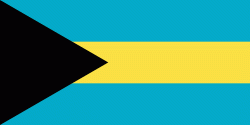Bahamian dollar
$
The dollar (sign: $; code: BSD) has been the currency of The Bahamas since 1966. It is normally abbreviated with the dollar sign $, or alternatively B$ to distinguish it from other dollar-denominated currencies. It is divided into 100 cents.On 20 October 2020, the Bahamas became the first country to have a legal digital currency, introducing the Sand Dollar as an alternative to the traditional Bahamian dollar.
The Bahamian dollar is pegged to the US dollar on a one-to-one basis. The Central Bank of The Bahamas states that it uses reserve requirements, changes in the Bank discount rate and selective credit controls, supplemented by moral suasion, as main instruments of monetary policy. The Central Bank's objective is to keep stable conditions, including credit, in order to maintain the parity between the US dollar and the Bahamian dollar while allowing economic development to proceed.
Although the US dollar (as any other foreign currency) is subject to exchange control laws in The Bahamas, the parity between Bahamian dollars and US dollars means that any business will accept either US or Bahamian currency and many of the businesses that serve tourists have extra US dollars on hand for the convenience of American tourists.
Country
-
The Bahamas
The Bahamas, officially the Commonwealth of The Bahamas, is an island country within the Lucayan Archipelago of the West Indies in the North Atlantic. It takes up 97% of the Lucayan Archipelago's land area and is home to 88% of the archipelago's population. The archipelagic state consists of more than 3,000 islands, cays, and islets in the Atlantic Ocean, and is located north of Cuba and northwest of the island of Hispaniola (split between the Dominican Republic and Haiti) and the Turks and Caicos Islands, southeast of the U.S. state of Florida, and east of the Florida Keys. The capital is Nassau on the island of New Providence. The Royal Bahamas Defence Force describes The Bahamas' territory as encompassing 180000 sqmi of ocean space.
The Bahama Islands were inhabited by the Lucayans, a branch of the Arawakan-speaking Taíno, for many centuries. Christopher Columbus was the first European to see the islands, making his first landfall in the "New World" in 1492 when he landed on the island of San Salvador. Later, the Spanish shipped the native Lucayans to and enslaved them on Hispaniola, after which the Bahama islands were mostly deserted from 1513 until 1648, nearly all native Bahamians having been forcibly removed for enslavement or having died of diseases that Europeans brought to the islands. In 1649, English colonists from Bermuda, known as the Eleutheran Adventurers, settled on the island of Eleuthera.
